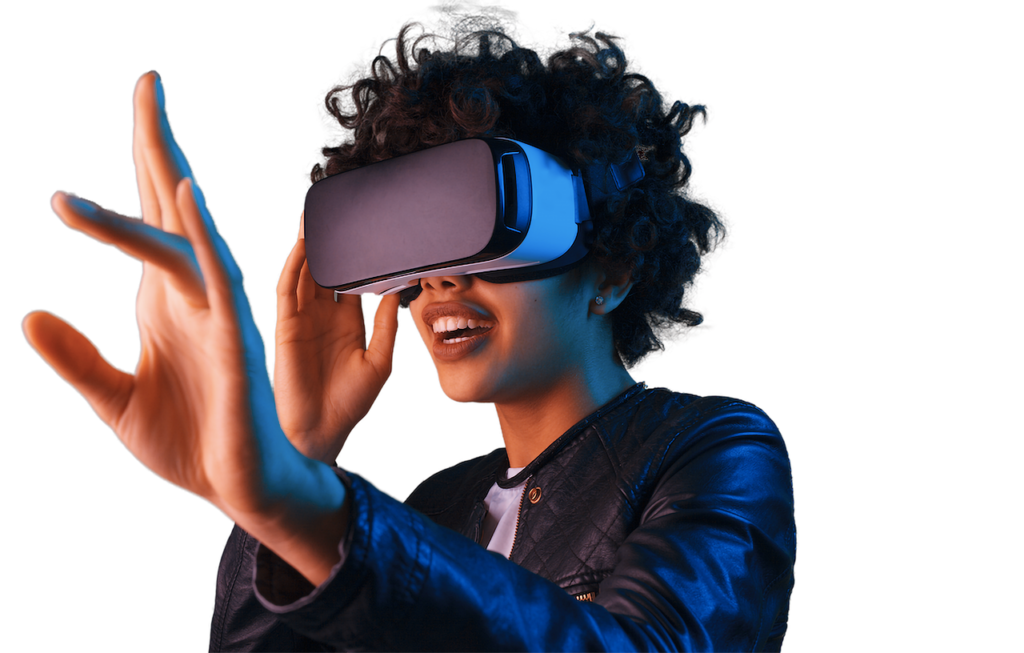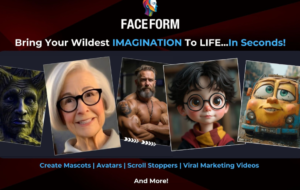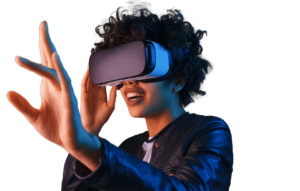In the ever-evolving world of technology, few innovations have captured the imagination of industries and consumers alike as much as Augmented Reality (AR) and Virtual Reality (VR). These two immersive technologies are revolutionizing the way we interact with the world, providing unique and engaging experiences across a wide range of sectors. From entertainment and gaming to education and healthcare, AR and VR are redefining what is possible and setting the stage for the future of digital interaction.
What Are AR and VR?
Before diving into the specifics of immersive experiences, it’s essential to understand the differences between AR and VR. While both are designed to create an immersive environment, they function in distinct ways:
Augmented Reality (AR): AR enhances the real world by overlaying digital elements on the physical environment. Unlike VR, which completely immerses users in a digital world, AR allows users to interact with both the real and virtual worlds simultaneously. Popular examples of AR include mobile apps like Pokémon GO, where virtual characters appear in real-world settings through a smartphone’s camera.
Virtual Reality (VR): VR, on the other hand, creates a fully immersive digital experience. Users wear VR headsets that block out the physical world and transport them into a completely virtual environment. VR is commonly used in gaming, simulations, and even virtual tourism, offering a deeply engaging experience.
Immersive Experiences in Entertainment
The most obvious application of AR and VR is in entertainment. These technologies have taken gaming to a whole new level, providing players with more engaging and lifelike experiences. With VR, players can enter digital worlds and interact with them in ways that were previously unimaginable. From thrilling first-person shooters to complex role-playing games, VR has changed how we experience video games.
In addition to gaming, VR is making its mark in movie and television industries. Virtual reality cinema is an emerging field where users can step into a story, becoming part of the narrative. This new form of storytelling allows audiences to engage with films and shows in a way that traditional mediums cannot offer.
On the AR side, applications are enhancing live events, sports broadcasts, and theme parks. Imagine watching a football game and using AR glasses to view player stats or instant replays in real-time. Such experiences enrich the consumer’s interaction with the event, blurring the lines between the real world and digital enhancements.
Immersive Learning and Education
AR and VR are not only transforming entertainment but also reshaping education and training. Traditional classrooms are being augmented with AR tools that bring lessons to life. For instance, medical students can practice surgery in a virtual setting using VR simulations, or history students can walk through historical events in a fully immersive environment. These technologies help students grasp complex concepts and ideas through practical, hands-on experience.
Moreover, VR is helping break down geographical barriers in education. Through virtual field trips, students can explore the pyramids of Egypt or dive into the Great Barrier Reef, all from the comfort of their classroom. AR applications further enhance this by overlaying additional information or 3D models onto real-world objects, making learning interactive and dynamic.
Healthcare and Therapy: Revolutionizing the Industry
AR and VR are making significant strides in the healthcare sector as well. Surgeons are utilizing VR to practice delicate procedures in a controlled environment before performing them in real life. This helps reduce the risks associated with new surgeries and improves the skills of medical professionals. AR is being used in diagnostics, helping doctors visualize patient data or scan body parts in real-time with digital overlays.
In therapy, both AR and VR are being employed to treat various mental health issues, such as PTSD, anxiety, and phobias. VR therapy allows patients to confront their fears in a safe environment, while AR can help provide real-time stress-relief techniques.
The Future of AR and VR
As technology continues to evolve, the possibilities for immersive experiences in AR and VR are virtually limitless. With the development of more sophisticated hardware, such as wireless VR headsets, and advanced software, the barriers between the digital and physical worlds will continue to blur. We can expect to see AR and VR being used in new and unexpected ways, from virtual travel experiences to fully immersive social interactions.
Conclusion
Immersive experiences powered by AR and VR are transforming the way we live, work, and play. From entertainment and education to healthcare, these technologies are paving the way for a more interactive and engaging future. As the technology matures, it’s clear that the immersive experiences offered by AR and VR will continue to grow, opening up endless possibilities for innovation across all industries. Whether for fun, learning, or medical treatment, AR and VR are shaping the future of human interaction with technology.





















